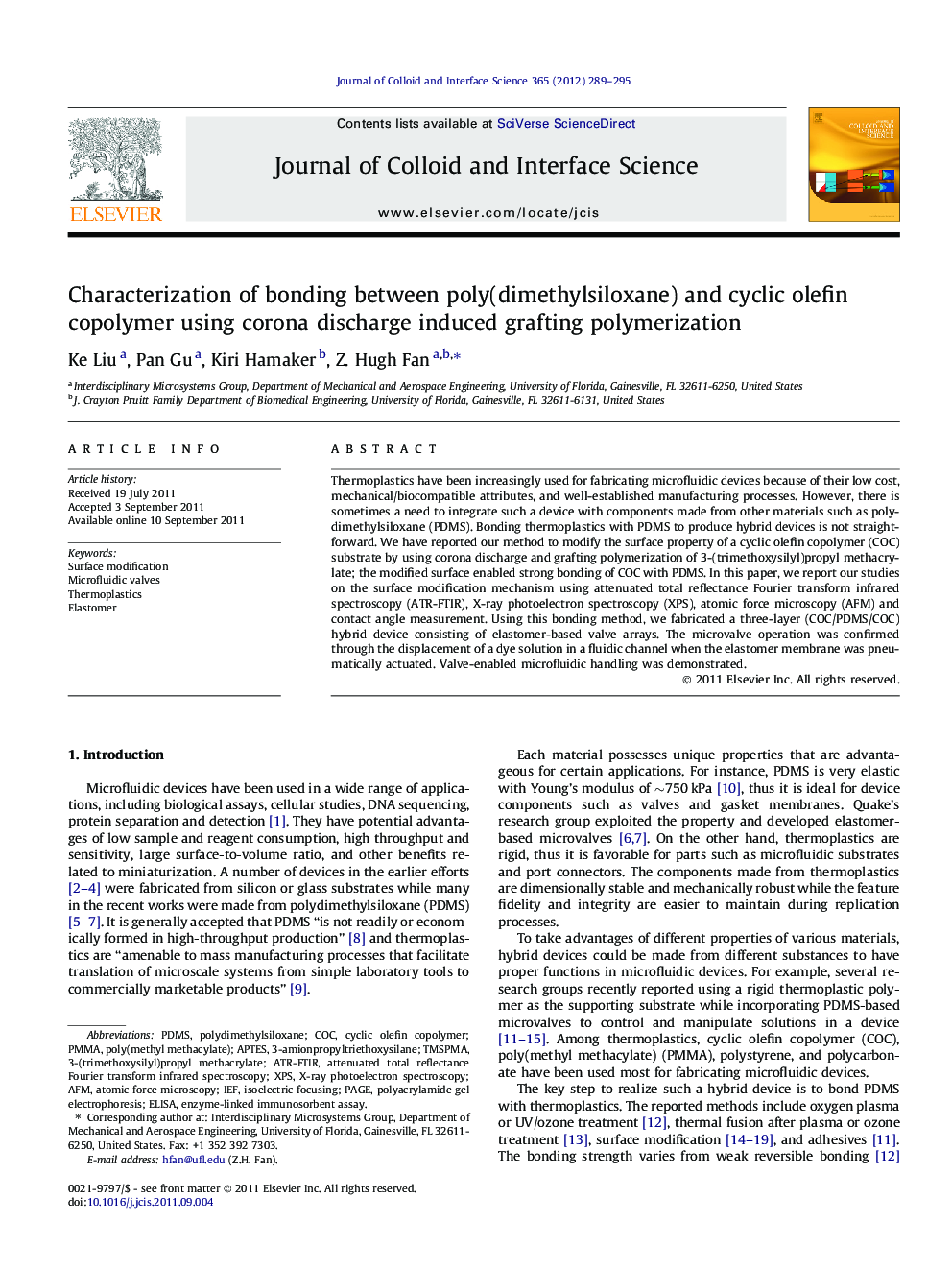| Article ID | Journal | Published Year | Pages | File Type |
|---|---|---|---|---|
| 608479 | Journal of Colloid and Interface Science | 2012 | 7 Pages |
Thermoplastics have been increasingly used for fabricating microfluidic devices because of their low cost, mechanical/biocompatible attributes, and well-established manufacturing processes. However, there is sometimes a need to integrate such a device with components made from other materials such as polydimethylsiloxane (PDMS). Bonding thermoplastics with PDMS to produce hybrid devices is not straightforward. We have reported our method to modify the surface property of a cyclic olefin copolymer (COC) substrate by using corona discharge and grafting polymerization of 3-(trimethoxysilyl)propyl methacrylate; the modified surface enabled strong bonding of COC with PDMS. In this paper, we report our studies on the surface modification mechanism using attenuated total reflectance Fourier transform infrared spectroscopy (ATR-FTIR), X-ray photoelectron spectroscopy (XPS), atomic force microscopy (AFM) and contact angle measurement. Using this bonding method, we fabricated a three-layer (COC/PDMS/COC) hybrid device consisting of elastomer-based valve arrays. The microvalve operation was confirmed through the displacement of a dye solution in a fluidic channel when the elastomer membrane was pneumatically actuated. Valve-enabled microfluidic handling was demonstrated.
Graphical abstractFigure optionsDownload full-size imageDownload high-quality image (50 K)Download as PowerPoint slideHighlights► Surface characterization using various technologies. ► Radical-induced graft polymerization of TMSPMA on COC surface for bonding PDMS. ► Integration of PDMS valve to a COC microdevice via established bonding protocol. ► Demonstration of valve-enabled on-chip fluidic handling.
